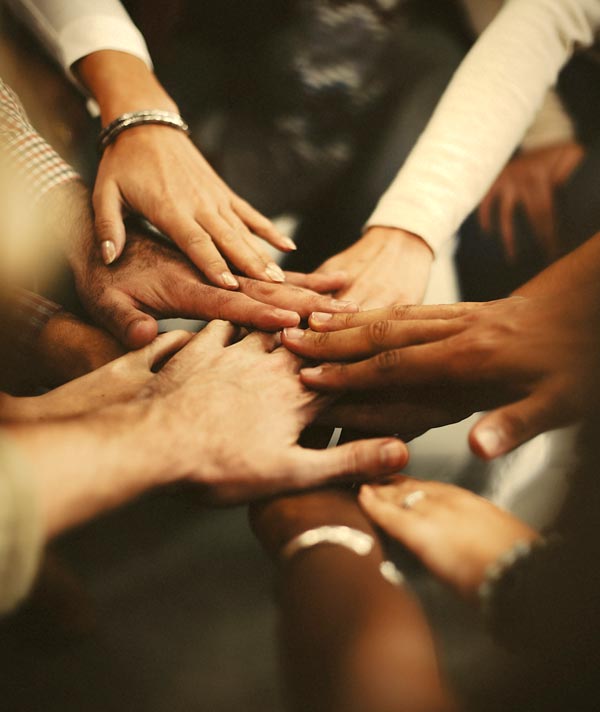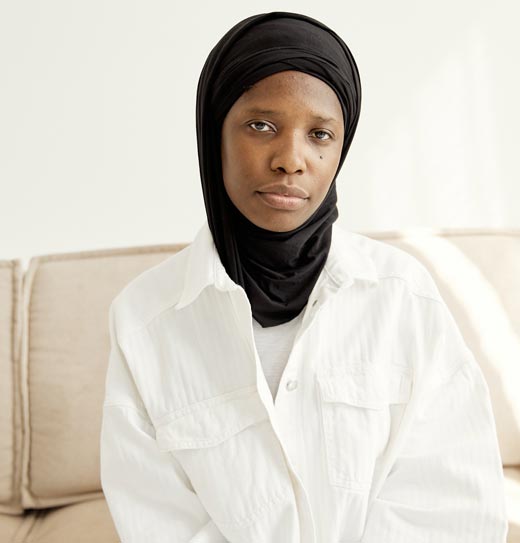Team:
Shazia Nasir, Sufia Nisar, Kelly Thyr,
Sweeta Abdullah, and Ameena Abdelfattah
Structure of the Project:
One lead person with a horizontal organizational structure. Work with consensus by communicating in a loop. Recognition of each member’s contribution. Leadership position on rotation.
Framework for the project
Salaam Cleveland is a non-profit Public Charity created for the members of Cleveland’s underserved population – primarily refugees and immigrants.
The organization takes pride in supporting people in need of assistance, protecting families, and promoting harmony in the area. Its new project, Domestic Violence: Prevention and Support aims to create awareness about the prevention of domestic violence and provide support to immediate and related victims.
The DVPS will strive to follow the mission of National Coalition Against Domestic Violence (NCADV), “to lead, mobilize and raise our voices to support efforts that demand a change of conditions that lead to domestic violence such as patriarchy, privilege, racism, sexism, and classism. We are dedicated to supporting survivors and holding offenders accountable and supporting advocates.”

Outline of the project
To accomplish the above 5 points, the team will:
- Divide the responsibility among the team according to each member’s capacity and availability.
- Set a schedule for remote and in-person meetings.
- Meet deadlines. Explain the inability to meet a deadline, if any.
- A transparent recording and sharing of all the work planned and completed.

Target Population
Salaam Cleveland’s target population is any person in need of help. However, given the local demographics, the organization anticipates working mostly with the minorities especially Muslims and women. Salaam Cleveland has been working extensively with diverse refugee communities. The DVPS project will now cater to the communities’ familial issues which sadly includes domestic violence.
Defining Domestic Violence
Domestic violence also known as intimate partner violence is the willful intimidation, physical assault, sexual assault, and/or other abusive behavior as part of a systematic pattern of power and control perpetrated by one intimate partner against another.
Domestic violence usually intensifies over time because the abuser becomes bolder in their demands and aggression as the relationship continues. They see the victim’s silence or tolerance not only as the victim’s weakness but also as a sign of validity of their own position.
Domestic violence can result in physical injury, psychological trauma, financial loss, and even death.
Domestic violence can affect any person regardless of their gender, age, economic status, sexual orientation, race, religion, or nationality. However, females are the most affected. Globally, as many as 38% of murders of women are committed by an intimate male partner.


Identifying Domestic Violence
A consistent effort to maintain power and control over someone, who is almost always a family or intimate partner.
Domestic violence can be physical, sexual, verbal, emotional, social, financial, or spiritual abuse.
Domestic violence often begins with the abuser putting down the victim by attacking their intelligence, appearance, opinions, mental health, or capabilities. They always compare the victim unfavorably to others.
The abuser blames the victim for all the problems in their relationship, and their violent outbursts. The abusers tend to be narcissistic, and the victim often suffers from a loss of self-confidence and guilt.
The abuser may threaten by yelling or sulking. They threaten to take away valuable things including paperwork such as social security card and related benefits, immigration status, or bank documents.
In the guise of love and care, they try to control and micromanage the victim’s life.
They accuse the victim of unfaithful behavior. They try to isolate the victim from family and friends by spreading false accusations against the victim or by spreading false accusations about the victim’s family and friends to the victim.
What Should the Victim Do
- Assess the situation and try to get support from trustworthy people or sources.
- Decide to leave the situation. If possible, stay with a trusted family or friend.
- Go to a shelter home or refugee camp to stay temporarily.
Talk to emergency services or report to the police.


Continue with Research on Domestic Violence and Related Issues
The team will strive to expand its knowledge of issues related to domestic violence and gain more skills for a total elimination of the problem. The team will use a highly informative article “Domestic Violence Research: What Have We Learned and Where Do We Go From Here?” by Carla Smith Stover of Yale University Child Study Center as an academic resource along with similar sources for expanding further knowledge in the area.
The DVPS project will also design special program for Muslim women with a focus on their cultural and religious backgrounds. It will include material from the Islamic tradition that highlight the value of family, women, and children. The team will allocate time and effort in understanding the psychology of abuse. In “Psychology and Domestic Violence Around the World,” Lenore E. Walker writes that “psychology has much to offer the field of domestic violence. Psychologists can collect research data; help develop theories to assist in the understanding of what promotes, facilitates, and maintains violence against women and family violence; develop and apply clinical interventions to assist battered women and children in healing from the psychological effects of violence; teach rehabilitation strategies to help men learn alternatives to violence; and spur the development of prevention strategies to eradicate domestic violence from the world.” On similar lines, the DVPS project will gather data on the community’s viewpoint on domestic violence and create awareness against domestic violence by using arguments from within the Islamic tradition. The hope is to aid in the development of more creative intervention and prevention strategies.

